|
Nancy Brashear and Carolyn Angus As we have done in previous years, we have made consideration of the diversity of reading interests of children and young adults and the identification of outstanding trade books with curriculum connection priorities in looking back at the bounty of nonfiction published in 2022. Here are our best-of-the-year picks. 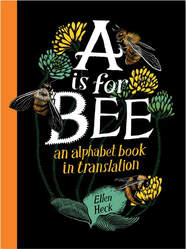 A Is for Bee: An Alphabet Book in Translation. Ellen Heck. (2022). Levine Querido. For each letter in the English alphabet, Heck creates a black-and-white scratchboard portrait of an animal against a colorful background and presents its name in one or more of 68 non-English languages in hand-lettered type. For example, “G is for Cat” because a Cat is a Gato in Spanish, a Gaazhagens in Ojibwe, and a Goyangi in Korean. (index of languages, author’s note) (PreK Up) 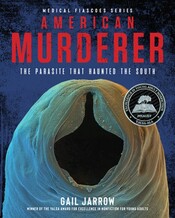 American Murderer: The Parasite That Haunted the South (Medical Fiascoes). Gail Jarrow. (2022). Calkins Creek. Jarrow’s latest medical mystery features the “American Murderer” that plagued the Deep South in the 19th and early 20th centuries. An engaging text and archival photographs chronicle the discovery of the deadly human parasitic hookworm Necator americanus by Charles Stiles in 1902, the identification and treatment of infected individuals, and public health campaigns of prevention and control. (timeline, glossary, websites, author’s note, source notes, bibliography, index) (Gr 6 Up) 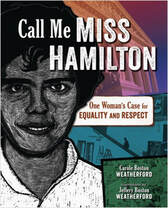 Call Me Miss Hamilton: One Woman’s Case for Equality and Respect. Carole Boston Weatherford. Illus. by Jeffery Boston Weatherford. (2022). Millbrook. Black civil right activist Mary Lucille Hamilton (1935-2002) refused to answer to “Mary” in an Alabama court. Taking her contempt charge to the Supreme Court in 1964, she won the right for African Americans to be addressed with respect. Jeffrey Boston Weatherford’s black-and-white scratchboard illustrations collaged with archival photographs partner well with Carole Boston Weatherford’s free verse text. (author’s note, timeline, further reading) (Gr 3-5) 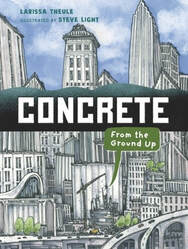 Concrete: From the Ground Up. Larissa Theule. Illus. by Steve Light. (2022). Candlewick. Theule and Light offer readers an informative and humorous introduction to concrete, a composite building material made of stone, sand, water, and cement. They explore the history of concrete from ancient to modern times, provide examples of “concrete wonders” from around the world, and end with a thought-provoking note on not-yet-thought-of uses of the concrete of the future. (bibliography). (Gr 3-5) 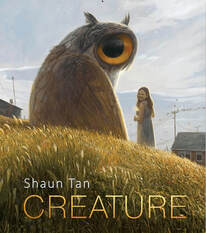 Creatures: Paintings, Drawings, and Reflections. Shaun Tan. (2022). Levine Querido. Creatures is a glorious collection of 25 years of Australian artist, writer, and filmmaker Shaun Tan’s artwork. The volume features a gallery of imaginary things from doodles in sketchbooks to oil paintings and essays that explore his creative process and fascination with creatures, known and unknown, that will intrigue readers. (afterword, artwork notes, selected bibliography of Tan’s books, selected exhibitions, acknowledgments) (Gr 9-Adult) 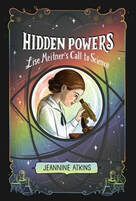 Hidden Powers: Lise Meitner’s Call to Science. Jeannine Atkins. (2022). Atheneum. Short poems chronicle the life story of Vienna-born Lise Meitner (1878-1968), who faced gender discrimination and antisemitism in academia as she worked with Otto Hahn and other scientists on the nature of the atom. With the rise of Nazism, Meitner fled to Sweden where she continued her research on nuclear fission. Only late in life was she recognized for her contributions to science. (author’s note, timeline, biographical notes, bibliography) (Gr 6 Up) 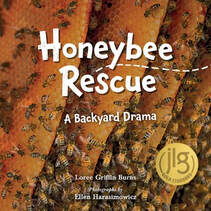 Honeybee Rescue: A Backyard Drama. Loree Griffin Burns. Photos by Ellen Harasimowicz. (2022). Charlesbridge. Some honeybees have swarmed from their overcrowded hive box and started a new colony in Mr. Connery’s old barn. He calls in Mr. Nelson, a certified bee rescuer, who uses a “bee vacuum cleaner” to suck up the bees and safely release them after transferring their wax combs to a new hive box. An accessible text and captioned full-color photographs describe a successful honeybee rescue step by step. (PreK Up) 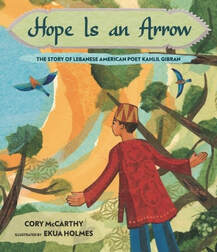 Hope Is an Arrow: The Story of Lebanese American Poet Kahlil Gibran. Cory McCarthy. Illus. by Ekua Holmes. (2022). Candlewick. “Kahlil Gibran became an arrow shot true, an arrow made from the strength of Lebanese cedars and feathered by the spirit of America.” Poetic prose and vibrant collage-and-acrylic artwork tell the life story of Kahlil Gibran (1883-1931), whose “secret hope” was to find a way of guiding people to come together through love and understanding in spite of their differences. (bibliography) (Gr 3 Up) 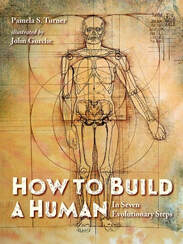 How to Build a Human: In Seven Evolutionary Steps. Pamela S. Turner. Illus. by John Gurche. (2022). Charlesbridge. Turner presents the complex story of the “winding evolutionary path” of humans, Homo sapiens, in a conversational, understandable, and witty style. The final chapter ends with the provocative statement, “We are one. One species. What unites us lies deeper than what divides us.” (author’s note, glossary, timeline, list of the hominin family, recommended books and websites, source notes, bibliography, index) (Grade 6 Up) 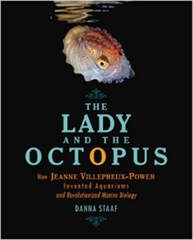 The Lady and the Octopus: How Jeanne Villepreux-Power Invented Aquariums and Revolutionized Marine Biology. Danna Staaf. (2022). Carolrhoda. This biography of Jeanne Villepreux-Power (1794-1871), who invented the aquarium while doing research on live sea animals (including the argonaut, a shelled octopus) off the coast of Sicily, is presented in an engaging, informative format. Chapters, written in a conversational tone, include quotes, scientific drawings, archival material, and contextual insets. (author’s note, timeline, glossary, source notes, bibliography, further reading, index). (Gr 6 Up) 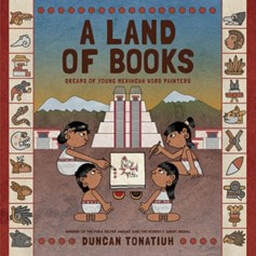 A Land of Books: Dreams of Young Mexihcah Word Painters. Duncan Tonatiuh. (2022). Abrams. “Our world, my brother, is an amoxtlalpan [a land of books],” says a Mexihcah girl telling him about the important work of their parents as tlahcuilohqueh, painters of words. With hand-drawn, digitally collaged artwork inspired by Mesoamerican codices and lyrical prose that includes Nahuatl words, Tonatiuh celebrates the importance of books in preserving Indigenous languages, stories, and traditions. (glossary, author’s note, bibliography, websites) (PreK Up) 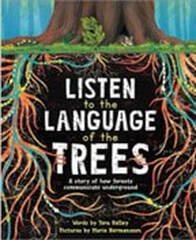 Listen to the Language of the Trees: A Story of How Forests Communicate Underground. Tera Kelley. Illus. by Marie Hermansson. (2022). Dawn. This accessible picture book tells the story of how the message that a giant Douglas fir struck by lightning, burned, and attacked by beetles is in danger is communicated through a network of tree roots and mycorrhizal fungi. Other trees come to the rescue—and the old tree heals while the young sapling at its base thrives. (“Explore More” information and activities). (PreK Up) 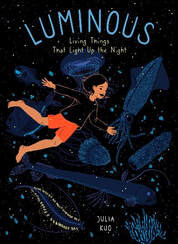 Luminous: Living Things That Light Up the Night. Julia Kuo. (2022). Greystone Kids. With beautiful double-spread illustrations and spare lyrical text and insets of added scientific information in smaller font against a black background, Kuo introduces young readers to various bioluminescent creatures including fireflies, foxfire fungi, glowworms, bristlemouth lightfish, and dinoflagellates. The book ends with “So always look, / really look, / when it’s dark out.” (PreK Up) 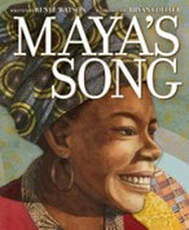 Maya’s Song. Renée Watson. Illus. by Bryan Collier. (2022). Harper. Emotive free verse poems and watercolor-and-collage illustrations tell the life story of Maya Angelou (1928-2014) from her birth in St. Louis—“A Black girl born in a world that didn’t love Black girls”—to being the first Black person and first woman to write a U.S. president’s inaugural poem. Nearly thirty million people heard her recite “On the Pulse of Morning” at President Bill Clinton’s 1993 inauguration. (timeline, author’s note, illustrator’s note) (Gr 3 Up) 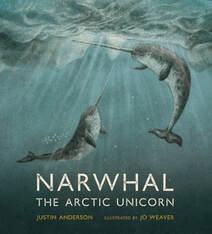 Narwhal: The Arctic Unicorn. Justin Anderson. Illus. by Jo Weaver. (2022). Candlewick. An old narwhal leads his pod north through the floating ice in Baffin Bay to spend the summer around the high Arctic islands. In September, the pod heads south for the winter. Anderson tells the story of the migration of the Arctic narwhal and adds related facts about these toothed whales in smaller font on a background of Weaver’s stunning artwork. (note on the narwhal’s future, map, websites, index). (PreK Up) 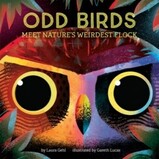 Odd Birds: Meet Nature’s Weirdest Flock. Laura Gehl. Illus. by Gareth Lucas. (2022). Abrams Appleseed. With colorful portraits and a simple rhyming text, this board book introduces young children to eight “odd birds”: frigatebird, blue-footed booby, shoebill stork, ostrich, hoatzin, oilbird, California condor, and burrowing owl. The final double spread features photographs of the unusual birds and a brief note of interesting facts about them. (Preschool Up) 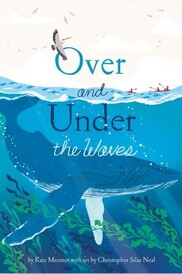 Over and Under the Waves (Over and Under). Kate Messner. Illus. by Christopher Silas Neal. (2022). Chronicle. As a young girl and her parents explore the ocean in red kayaks, Messner’s lyrical narrative and Neal’s colorful mixed-media illustrations portray the biodiversity of life above the ocean’s surface (sea otters, whales, gulls, other shorebirds) and below (sharks, moon jellies, octopuses, barnacles). The day ends with the sun melting into the sea. (author’s note, glossary of featured ocean species, further reading) (PreK Up) 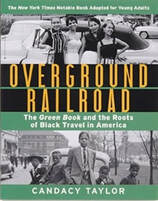 Overground Railroad: The Green Book and the Roots of Black Travel in America. (Young Adult Adaptation). Candacy Taylor. (2022). Amulet. Taylor gives readers a road-trip view of 20th century American history through the pages of The Green Book, the annual guide for Black travelers published from 1936 to1966. Victor Hugo Green (1892-1960) created The Negro Motorist Green Book as a guide to businesses, restaurants, accommodations, gas stations, and other facilities open to Black travelers. (archival photographs, epilogue, source notes, bibliography, index) (Gr 6 Up) 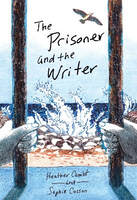 The Prisoner and the Writer. Heather Camlot. Illus. by Sophie Casson. (2022). Groundwood. In 1895, French army captain Alfred Dreyfus is accused, tried, convicted, and imprisoned for life on Devil’s Island for treason. In 1898, Émile Zola pens “J’Accuse …!”, an open letter to the president of France published in L’Aurore, a Paris newspaper, informing the public that Dreyfus was an innocent victim of antisemitism. The Dreyfus Affair is a historical example of speaking out against injustice. (author’s note, bibliography, endnotes) (Gr 6 Up) 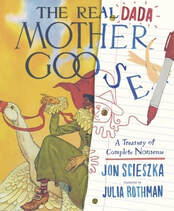 The Real Dada Mother Goose: A Treasury of Complete Nonsense. Jon Scieszka. Illus. by Julia Rothman. (2022). Candlewick. Scieszka mischievously presents six rhymes from Blanche Fisher Wright’s The Real Mother Goose (1916) in different styles. Rothman adds to the playful nonsense by collaging parts of Wright’s artwork into her mixed-media illustrations. The book ends with notes on some of the 36 forms such as spoonerism, jabberwocky, anagram, and rebus used in the reconstructions; Mother Goose history; Blanche Fisher Wright; and Dada. (Gr 3 Up) 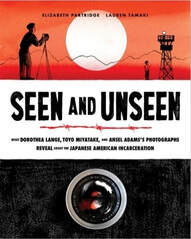 Seen and Unseen: What Dorothea Lange, Toyo Miyatake, and Ansel Adams’s Photographs Reveal About the Japanese American Incarceration. Elizabeth Partridge. Illus. by Lauren Tamaki. (2022). Chronicle. Elizabeth Partridge’s engaging narrative pairs with the photography of Dorothea Lange, Toyo Miyatake, and Ansel Adams, and the mixed-media artwork of Lauren Tamaki to document the horrific story of life at Manzanar for incarcerated Japanese Americans during WWII. (map, notes on related historical and contemporary topics, photographers’ biographies, author’s note, illustrator’s note, source notes, photo credits) (Gr 6 Up) 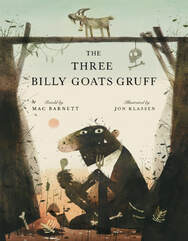 The Three Billy Goats Gruff. Mac Barnett. Illus. by Jon Klassen. (2022). Orchard. Barnett and Klassen add their own creative storytelling touches to the traditional tale of the three Gruff brothers who outwit a hungry and greedy troll. Klassen’s depiction of the troll and his under-the-bridge abode in his earth-tone illustrations is especially creepy, and Barnett’s narrative gives a bigger role to the troll, who frequently speaks in rhyme. The tale ends with unexpected embellishments. (PreK Up) 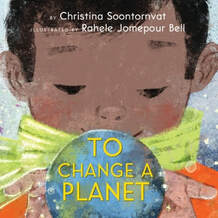 To Change a Planet. Christina Soontornvat. Illus. by Rahele Jomepour Bell. (2022). Scholastic. The global crisis of climate change is introduced to young children with spare lyrical text and stunning mixed-media illustrations in which the negative effects of humans on our planet are balanced by the hope that we will take action to counter them. “But when one person, // and one person, and one person // become many, // they can change a planet.” (author’s note, sources) (PreK-Gr 2) 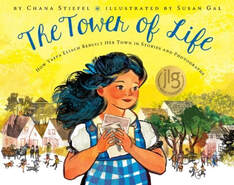 The Tower of Life: How Yaffa Eliach Rebuilt Her Town in Stories and Photographs. Chana Stiefel. Illus. by Susan Gal. (2022). Scholastic. Yaffa Sonenson Eliach (1935-2016) escaped the killing by Nazi soldiers of nearly everyone in her beloved shtetl of Eishyshok. Yaffa immigrated to the U.S. in 1953, and became a Holocaust historian. She spent 17 years collecting photographs and stories of Eishyshok’s community and built the “Tower of Life” exhibit in the United States Holocaust Memorial Museum. (timeline, bibliography, further reading) (PreK Up) 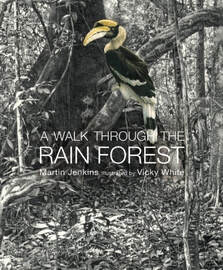 A Walk Through the Rain Forest. Martin Jenkins. Illus. by Vicky White. (2022). Candlewick. Jenkin’s conversational narrative provides information on the diversity and interconnection of species in the tropical rain forest of Taman Negara, a national park in Malaysia. An appended gallery of full-color portraits of 33 animals invites readers to spot them in White’s stunning photorealistic illustrations during rereadings. (map, index) (PreK Up) Nancy Brashear is Professor Emeritus of English at Azusa Pacific University, in Azusa, California. Carolyn Angus is former Director of the George G. Stone Center for Children’s Books, Claremont Graduate University, in Claremont, California.
0 Comments
Leave a Reply. |
AuthorsThese reviews are submitted by members of the International Literacy Association's Children's Literature and Reading Special Interest Group (CL/R SIG). Archives
March 2024
Categories
|

 RSS Feed
RSS Feed